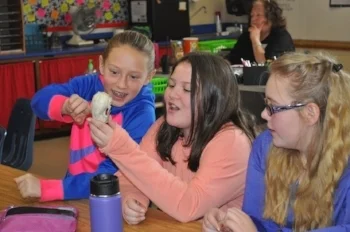

Mysteries Afoot: Identifying Appalachian Animal Tracks
Animal tracks are an interesting tool for anyone with a keen eye who wants to learn more about the habits and behaviors of our animal neighbors.

A Week of Discovery
Thirteen kids joined BRDC at Matthews State Forest Pavilion for Discovery Day Camp.


Toes in the Sand
The K-2 Program presented the book "Whose Tracks are These? A Clue Book of Familiar Forest Animals" by Jim Nail.

Animal Tracks & Signs in Grayson County Schools
This month, Grayson County students learned all about Animal Tracks and Signs.
BRDC Program Director, Lisa Benish, showed fourth grade students examples of tracks made by animals found here in the Blue Ridge. Students were asked to reenact the walking patterns of species such as white-tail deer, black bear, and eastern cottontails.